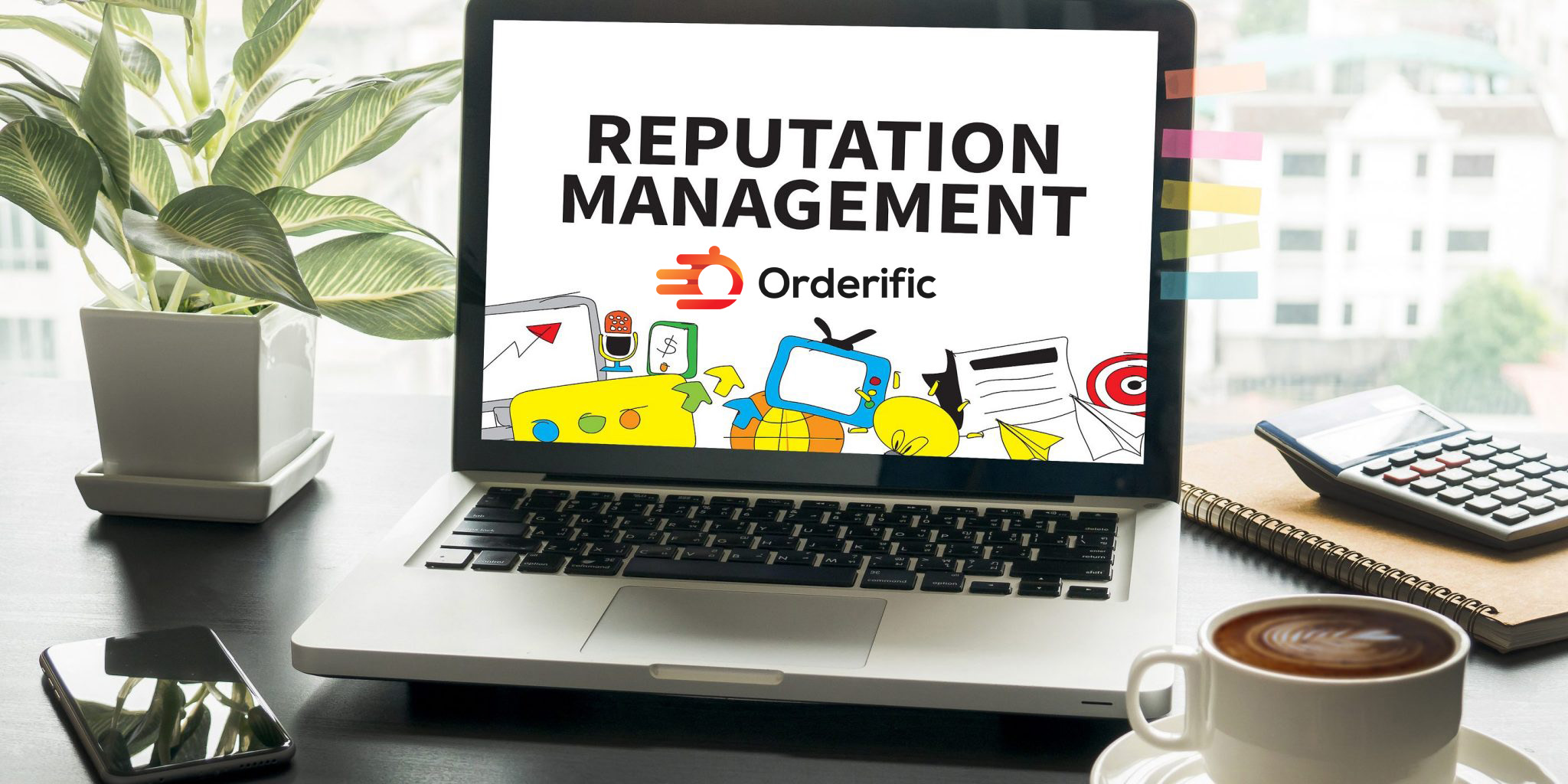In the bustling world of bars and pubs, reputation is king. Positive online reviews can turn a quaint watering hole into the town’s hottest spot overnight. However, with the digital age comes the age of online reputation management. Herein, managing your bar’s digital image is as crucial as the quality of your brews. Whether a rave review or a scathing critique, each online review paints a picture of your establishment. As such, understanding the impact of these reviews on your bar’s popularity and management strategies is vital. Join us as we delve into the intricate web of online reputation management, exploring its impact and offering effective techniques to enhance your bar’s standing in the digital domain. Let’s tap into the power of positive reviews and turn negative feedback into opportunities for growth.
What is Reputation Management?
Reputation management is the digital era’s knight in shining armor for businesses. It’s a complex yet intriguing dance that swirls around a brand’s image like a protective cloak. It starts with a keen awareness of the online chatter encircling your bar. Imagine the buzz of social media platforms, rich with customer experiences.
Now, consider the power of Google alerts, primed to notify you about any future brewing storms. With online reputation management, such storms can be tracked and tamed. Picture it as a dedicated reputation management service, tirelessly shaping perceptions.
But the magic of reputation management isn’t just in damage control. It’s also in the alchemy of turning negative reviews into shining nuggets of opportunity. Remember, every critique is a chance to evolve, refine, and better serve your clientele.
Indeed, reputation management is a subtle ballet of brand reputation enhancement. It’s about ensuring that the echo of positive reviews resonates louder and reaches further. Ultimately, reputation management fosters trust between your bar and its patrons. At its core, it is the gentle art of transforming customers into loyal brand ambassadors, one positive review at a time.
So, as you glance through your social media reputation, remember the power of reputation management. It’s your tool to create an impeccable online persona that aligns perfectly with the quality of your brews and the warmth of your hospitality.
What is Brand Reputation Management?
Brand Reputation Management, at its heart, is an artful tapestry woven with threads of public perception. It’s a captivating dance, a delicate balance between embracing praise and confronting criticism. Picture a grand orchestration of every aspect of a brand’s image. The faint whisper of positive online reviews plays a symphony. It’s a melody that resonates and reverberates, reaching far and wide across the digital landscape.
Imagine a powerful reputation management software as its maestro. It listens, tunes, and harmonizes the orchestra, ensuring the rhythm of customer experiences remains pleasing. Brand reputation management isn’t merely a process; it’s an experience. One that elicits imagery of the social media stage, ablaze with chatter and opinion.
Now, consider negative reviews. They might seem like discordant notes, but think again. They are opportunities to fine-tune our orchestra. Tackling them head-on, turning them into a harmonious part of our symphony, is the essence of brand reputation management.
Remember, the goal isn’t to silence the critique. It’s to embrace it, learn, refine, and ultimately improve. This delicate ballet is the lifeline of a business reputation, an ongoing endeavor to ensure the brand’s melody remains harmonious.
So, as you navigate brand reputation management, remember its power. It’s your compass in the bustling world of online reputation, guiding you toward an impeccable online persona that aligns with your vision. Each step, each decision, and each review is an opportunity to create a symphony that reverberates across the digital domain.
Reputation Management for Businesses
In the dynamic world of business, reputation management is the guiding light. It’s like a poker game, where each review is a card revealing your hand. Every business, just like a seasoned poker player, needs to harness the power of reputation management software. Like an ace up your sleeve, this tool leverages the power of positive reviews, turning them into a winning hand.
Yet, reputation management is not just about triumph. It’s about learning from each round, each card dealt, and each review received. Though negative reviews may seem like a losing hand, they offer rich insights. They hold the key for businesses to learn, adapt, and improve, evolving into a stronger contender in the marketplace.
Reputation management also brings social media into play. The virtual stage buzzes with chatter, opinions, and feedback. The trick is to listen, engage, and respond. Consider it an opportunity for businesses to join the conversation and turn it into a meaningful dialogue.
Brand reputation management, in this context, becomes an art form. It’s a dance between embracing praise and handling criticism, turning it into a symphony of customer experiences. Ultimately, it’s about ensuring your brand’s melody remains harmonious across the digital landscape.
Remember, at the heart of reputation management lies the customer experience. It’s the pulse that keeps a business thriving and relevant. Let reputation management be your guiding star as you venture into online reputation. It’s your map to navigate the bustling world of online reviews, linking your brand image with customer satisfaction and business success.
How Do Companies Manage Their Reputation?
Companies manage their reputations by blending art and science with human touch. First, they tune in to the vibrant hum of social media. This platform, teeming with customer experiences, becomes their pulse. It helps them gauge public sentiment and understand their brand’s standing.
Next, they employ robust reputation management software. This digital maestro listens, analyzes, and harmonizes the brand’s online persona. It’s about keeping their fingers on the pulse, staying alert to any tidal shifts in the public’s perception.
Dealing with negative reviews is another crucial aspect. These critiques may seem like thorns, yet they offer valuable insights. Companies seize them as golden opportunities to learn, tweak, and refine their operations.
At the same time, they amplify the echo of positive reviews. They let these testimonials reverberate across the digital landscape, enhancing their brand’s image. Each positive review is, after all, a testament to a successful customer experience.
Perhaps most importantly, companies manage their reputations through engagement. They foster a two-way dialogue with their customers, adding a warm, human touch to the digital realm. In the bustling world of online reputation management, this human connection is the heart that keeps the brand alive and thriving.
What Does a Brand Reputation Manager Do?
A brand reputation manager is the maestro of a brand’s online symphony. They hold the baton of control, orchestrating the brand’s digital persona. Picture them as the vigilant watchman, keenly monitoring the pulse of social media chatter. They listen, analyze, and harmonize the myriad voices, ensuring the brand’s melody remains pleasing to the audience.
Their role is not limited to merely observing. Imagine them diving into the vibrant, bubbling stream of online reviews. They sift through each piece of feedback, separating the wheat from the chaff. Positive reviews are their treasured pearls, testimonials that they carefully amplify across the digital landscape.
Yet, even negative critiques hold value for them. They perceive these as golden nuggets of opportunity and insights to refine the brand’s operations. Picture them as the brand’s diplomat, addressing these critiques tactfully and gracefully. Their mission? To transform discordant notes into harmonious tones.
Beyond this, they’re the brand’s liaison, the bridge connecting the brand with its clientele. They foster a dialogue, infusing a warm, human touch into the digital realm. Each day, they dance the delicate ballet of brand reputation management, shaping a symphony that resonates with customer satisfaction. They ensure the brand’s online image aligns seamlessly with its vision.
How to Build a Reputation Management Plan
Building a reputation management plan is pivotal to maintaining a favorable online image and nurturing a constructive relationship with your customers. It’s about being prepared, knowing how to respond to feedback, and harnessing the power of both positive and negative reviews. This section outlines a comprehensive strategy to help you create your reputation management plan. It offers insights into tracking online chatter, responding to feedback, maximizing positive reviews, and turning negative ones into opportunities. Get ready to chart your course in the vast ocean of online reputation management.
Research, Monitor, and Audit Your Reputation
Charting your course in the vast ocean of online reputation begins with research. Immerse yourself in the vibrant chatter of social media, listening to the hum of your customers’ experiences. This step equips you with valuable insights, depicting your brand’s current standing.
Next, don your detective hat and monitor your reputation. Leverage the power of Google alerts and reputation management software. With these tools, you can stay abreast of the ever-changing tide of public opinion.
Audit your reputation periodically. Think of it as a health check-up for your brand. This process allows you to diagnose any potential issues and take corrective action. It’s about keeping your finger on the pulse, ensuring your brand’s heartbeat remains steady.
Remember, the goal here is not just to observe. Diving into the sea of reviews, you’re seeking hidden treasures. Positive reviews are pearls, testimonials to be amplified. Negative reviews, on the other hand, are golden opportunities for improvement.
Throughout this journey, infuse a warm, human touch. Respond to feedback, fostering a two-way dialogue with your customers. This engagement nurtures a bond of trust, turning customers into loyal brand ambassadors.
Lastly, remember to revisit your reputation management plan periodically. As the digital landscape evolves, so should your strategy. It’s about staying agile, ready to sail with the shifting winds of online reputation management.
Create Reactive and Proactive Management Strategies
Creating a robust reputation management plan requires both reactive and proactive approaches. Think of it as a chess game. Proactive strategies are your offensive moves, shaping your brand image with intent. These steps include sharing engaging content, showcasing success stories, and amplifying positive customer feedback. After all, each positive review is a powerful testimonial echoing across the digital expanse.
On the other hand, reactive strategies are your defense. They come into play when you face criticism or negative reviews. Instead of viewing these reviews as setbacks, see them as opportunities. They offer invaluable insights, paving the way for improvement and refinement. Each critique is a chance to enhance your services and cater to your clientele’s needs.
Incorporate both approaches into your reputation management plan. As a chess player leverages offense and defense, you should balance proactive and reactive strategies. This blend will ensure a harmonious symphony of customer experiences, resonating with satisfaction and trust.
As you navigate this journey, remember to add a human touch. Engage in meaningful dialogue with your customers, addressing their concerns and appreciating their praise. This engagement nurtures a bond of trust, transforming customers into loyal brand ambassadors.
Lastly, remember to refine your strategies continually. As the digital landscape evolves, so should your approach. Stay agile, ready to adapt and innovate, ensuring your brand’s melody remains harmonious online.
Develop a Tone Guide For Responding to Comments
Developing a tone guide is akin to tuning a musical instrument. It’s an intricate process that ensures every response resonates perfectly with your brand’s persona. Firstly, imagine the experience.
Immerse yourself in the vibrant tapestry of online conversations. Listen to the symphony of customer feedback. Each comment, akin to a musical note, echoes a unique sentiment.
Next, think about how your brand should respond. Imagine it as a resonating response, a harmonious chord that aligns with your brand’s identity. Should it be formal or casual? A bit witty or strictly professional?
Your responses, after all, reflect your brand’s persona. They should reverberate with the same rhythm as your brand’s values. The tone guide serves as a compass, guiding your responses toward maintaining this harmony. It ensures that each note and response resonates with your brand’s melody.
But remember, the tune isn’t meant to be rigid. Just as a melody can shift its rhythm, so can your tone guide. It should evolve with your brand, adapting to the ebbs and flows of the digital landscape. Lastly, infuse your responses with a warm, human touch. Engage in meaningful dialogue, fostering a bond of trust with your customers.
This engagement is pivotal, transforming your responses into a symphony of customer satisfaction. Indeed, developing a tone guide is an art form. It’s about creating a symphony that resonates across the digital landscape, echoing with the harmony of your brand’s persona.
Communicate The Plan to Your Organization
Effective communication, including your reputation management plan, is the heart of any successful strategy. First, picture your organization as a well-tuned orchestra, each department playing its unique yet harmonious part. Your reputation management plan is the sheet music, guiding every member towards the same melody.
Begin by sharing the plan widely. Engage the senses, making them feel the vibrancy of online reputation management. Let them grasp the thrill of positive feedback, the insights gleaned from constructive criticism.
Next, hold training sessions. Here, let them experience the rhythm of responding to customer feedback. Infuse a warm, human touch into these sessions. Make them interactive, engaging, and fun. Create a space where they can practice, learn, and grow.
Remember, the goal is to ensure everyone understands the plan. It’s about knowing the ‘what’ and the ‘why.’ This understanding forms the backbone of effective execution.
In this symphony of reputation management, each employee is a valuable player. Their role is crucial in nurturing the brand’s online persona and fostering meaningful customer relationships. Communicate this to them. Make them feel valued, an integral part of the larger melody.
Lastly, keep the dialogue open and ongoing. As your reputation management plan evolves, keep your team in the loop. Remember, together, you’re composing a harmonious brand symphony. The key lies in ensuring every member is in tune with the plan, ready to play their part in this grand performance.
Take Action Based on Comments, Feedback, and Reviews
Taking action based on comments, feedback, and reviews resembles a sailor adjusting sails based on ever-changing winds. In the vast ocean of online conversation, each piece of feedback is a gust of wind. Positive comments, like gentle breezes, propel your brand forward, amplifying its presence.
Listen to the whispers of satisfaction echoing in these reviews. Acknowledge them, responding with gratitude. Moreover, let these testimonials reverberate across the digital landscape, enhancing your brand’s image. Each positive review is, after all, a testament to your brand’s commitment to customer satisfaction.
Contrarily, negative comments can strike like unexpected gales. Yet, they are not setbacks but opportunities. Embrace these critiques, viewing them as valuable insights. They guide your course, nudging you towards refinement and improvement. After all, in every critique lies the potential to enhance your services, better catering to your customers’ needs.
Finally, remember to respond to each comment like a sailor acknowledging the wind. Infuse your responses with warmth, engaging in meaningful dialogue with your customers. This engagement is pivotal, nourishing a bond of trust and turning customers into loyal brand ambassadors.
Taking action based on comments, feedback, and reviews is a delicate dance. It ensures your brand stays in tune with public opinion, ready to sail with the shifting winds of customer sentiment. This agility harmonizes your brand’s melody, resonating across the digital landscape.
Constantly Practice Steps One, Two, and Three
The act of continually practicing steps one, two, and three, in essence, mirrors the rhythm of a heart, persistently beating, ensuring the body’s vitality. It’s a never-ending dance, a perpetual cycle that breathes life into your reputation management. Carefully rehearse step one; stay tuned into the vibrant hum of online chatter. Dig deep, sipping the nectar of insights from the garden of social media. Keep your ears pricked, absorbing the resonating echo of customer experiences.
Steadily move on to step two. With each sunrise, strategize with the light of foresight and prudence. Proactively paint your digital persona, like an artist meticulously detailing each brush stroke. Simultaneously, arm yourself with reactive strategies, ready to deflect any storms of criticism with grace.
Finally, step three is the act of tuning your responses. It’s like playing a well-orchestrated symphony, ensuring every note and every response aligns seamlessly with your brand’s rhythm.
Remember, this cycle isn’t rigid. Rather, it mirrors the fluidity of a river, constantly adapting to the terrain. As your brand evolves, so should your strategy, always in sync with the ever-changing digital landscape.
The art of reputation management lies in the continual practice of these initial steps. It’s a rhythmic dance that enhances your brand’s melody, ensuring it resonates harmoniously across the online realm. Remember that your brand’s reputation is a vibrant painting you continually perfect, stroke by stroke, ensuring its appeal remains timeless and inviting.
Track Your Results
Tracking results resemble a seafarer using a compass to navigate the vast ocean. Each review and every comment is a star, guiding your course. Transparency is key. Ideally, you would share your findings, letting them ripple across your organization. These insights illuminate your path, highlighting areas of success and areas needing improvement.
Embrace the voyage, savoring the rhythm of progress. Imagine tracking your results as a grand performance, a crescendo of satisfaction. It’s an enlightened dance of adaptation, a continual refinement and enhancement symphony.
Adorn the process with warmth and openness. Remember, each tracked result is a testament to your brand’s commitment to its clientele. The applause of positive feedback fuels motivation, spurring further excellence. Negative critiques, however, are golden opportunities, signposts pointing to improvement.
In the grand scheme of reputation management, tracking results is an act of wisdom. It’s about understanding the echo of our digital actions. It’s about ensuring your strategies resonate with the rhythm of customer satisfaction. Tracking results is an art – a delicate dance ensuring your brand’s melody remains harmonious, echoing the vast digital landscape.
Tracking results is a beacon guiding your brand’s journey. It’s an illuminating light, ensuring your reputation management plan stays in tune with its purpose and always sails toward success. The process is continual – a rhythmic dance between adaptation and evolution, constantly refining your brand’s online persona.
Lastly, remember to bake SEO optimization into your strategies. The spice amplifies your brand’s presence across the digital realm. It ensures your strategy resonates with the rhythm of customer satisfaction, making your brand’s melody harmonious across the vast digital landscape.

Reputation Management Software
Picture an orchestra conductor, standing poised with baton in hand, ready to harmonize a symphony of instruments. Now, envision Reputation Management Software as that conductor, seamlessly orchestrating an ensemble of online reviews, comments, and customer feedback. It’s a symphony of data, resonating with the rhythm of your brand’s reputation.
Immersed in this vibrant digital soundscape, the software sifts through the influx of online information. Like a lighthouse piercing through dense fog, it zeroes in on the sentiment behind each piece of feedback. It’s a dance of data analysis, an intricate ballet of sentiment recognition.
The software listens attentively to the whispers of satisfaction, the roars of criticism, and the silent hum of indifference. Each piece of feedback, akin to a musical note, is heard, analyzed, and acted upon. It’s a dynamic interaction, a rhythmic dance of response and adaptation.
Managing your brand’s reputation is transformed into a well-orchestrated performance. The software steps into the spotlight, allowing you to step back and appreciate the harmony. It’s an experience of beautifully arranged data, subtly orchestrated to resonate with your brand’s identity.
The software takes a bow as the grand performance concludes, leaving a harmonious brand reputation resonating across the digital landscape. It’s a symphony of reputation management, a musical masterpiece that leaves a lasting impression.
To amplify this harmonious melody, here are some finely tuned instruments, each playing a vital role in the Reputation Management Software orchestra:
- Yext Reviews
- ReviewTrackers
- Reputation
- Podium
- BirdEye
- NiceJob
- Reviews.io
Each one is unique, harmonizing with your brand’s rhythm, ensuring your brand’s melody resonates across the vast digital landscape. It’s an ensemble of tools, each contributing to the grand symphony of your brand’s reputation.
The Role of SEO in Reputation Management
Stepping into the world of reputation management, SEO emerges as a skilled maestro, harmonizing your brand’s symphony on the digital stage. Imagine SEO as a subtle rhythm underpinning and enhancing your brand’s melody in the overcrowded concert hall of the internet. It adeptly crafts and fine-tunes your reputation, ensuring you hit the high notes in search results.
The spotlight glows brighter with SEO, illuminating the path for potential customers. It guides them gently, drawing them towards your brand amidst the din of competitors. This smart, strategic conductor adjusts the tempo, adapting to the ever-changing algorithms of search engines. It dances nimbly, leading your online presence to a crescendo of visibility.
Imagine the experience. The smooth transition of strategy into action, the symphony of keywords and backlinks, and the warm applause of increased traffic. SEO doesn’t just optimize your reputation; it amplifies it, turning whispers of your brand into an alluring, tuneful chorus.
Feel the rhythm in the interplay of on-page and off-page SEO practices. The delicate balance between these two creates a harmonious performance, earning the applause of higher rankings. Meanwhile, local SEO adds a warm, personal touch, connecting with your audience on a deeper, more immediate level.
In the grand performance of reputation management, SEO plays a pivotal role. The maestro ensures your brand’s melody reverberates across the vast digital landscape. As the curtain falls, with the audience’s applause still echoing, you know SEO has orchestrated a performance that resonates, enthralls, and, most importantly, engages.
Importance of SEO in Online Reputation
The importance of SEO in online reputation management can be likened to the melody in a captivating symphony. It sets the tempo, guides the rhythm, and leaves an indelible impression. This digital maestro takes center stage, conducting the brand’s performance in the grand concert hall of the internet.
- SEO, akin to a skillful conductor, crafts an alluring composition of keywords and backlinks. Each note is meticulously placed, creating a harmonious interplay that resonates with the audience – the search engines.
- The spotlight intensifies as SEO fine-tunes the brand’s online presence. It ensures they hit the high notes in search rankings, amplifying their visibility amidst the cacophony of competitors.
- The maestro adjusts the tempo, dancing gracefully to the tune of changing search engine algorithms. This elegant adaptation ensures the brand’s melody harmonizes with the shifting digital landscape.
- On-page and off-page SEO practices interlock like a well-rehearsed duet. Their synergistic performance strikes a balance, earning the applause of higher search rankings.
- Local SEO adds a touch of warmth and familiarity. It connects with the audience deeper, adding a personal note to the brand’s symphony.
In essence, SEO is the backbone of online reputation management. It shapes the narrative, influencing how the brand is perceived digitally. As the curtain falls, the audience – potential customers – are left in awe, their applause echoing across the vast digital landscape. Under the skillful guidance of SEO, the melody has left an enduring impression, ensuring the brand’s reputation remains harmoniously in tune with its audience’s needs and expectations.
SEO Best Practices for Reputation Management
Imagine SEO practices as the choreography for your reputation management ballet. Each step is meticulously planned, and each pirouette is executed with precision. First comes keyword research. It’s akin to selecting the music for your performance and setting the rhythm for your dance.
Next, focus on meta descriptions and title tags. Like a dancer’s costume, they add visual appeal, capturing the audience’s attention. Meanwhile, backlinks serve as stage props, providing support and adding depth to your performance.
Your content should be engaging and informative, dancing gracefully across the stage of your website. Intricately weave your primary and secondary keywords into this dance, ensuring a performance that resonates with search engine algorithms.
Implementing structured data is another crucial step. Imagine it as the lighting on your stage – it highlights your best moves, making your performance unforgettable.
Remember social media. It serves as your encore, your chance to connect with the audience after the curtain falls. Engage, respond, and listen – it’s your final bow, leaving a lasting impression.
Mobile optimization is your backstage crew, ensuring your performance goes smoothly on all devices. Lastly, track your performance. It’s a standing ovation, a critique – the feedback that helps you perfect your dance.
SEO best practices are the choreography for your reputation management ballet. Each step contributes to a performance that captivates the audience – your customers. And as the curtain falls, it ensures your brand’s melody echoes across the vast digital landscape.
Embracing Social Media for Reputation Management
In the grand theatre of online reputation management, social media platforms make their entrance with a flourish. Like vibrant dancers, they captivate the audience – your customers and potential clientele. They twirl gracefully on the digital stage, their rhythm resonating with your brand’s melody.
Envision each social media platform as a unique dance style. Facebook, with its vast user base, is the grand waltz. Its sweeping movements gather wide-ranging feedback and establish a broad connection. Meanwhile, Instagram’s visual allure resembles a tango, enticing and engaging. It paints a vivid picture of your brand, captivating its audience with striking imagery.
Then comes Twitter, the electrifying salsa of the ensemble. Fast-paced and concise, it allows for real-time interaction and rapid response. LinkedIn adds a touch of elegance, a dignified ballet that fosters professional connections and displays your expertise.
The dance continues with Reddit and Quora. They are the passionate flamenco, provoking thoughtful discussions and providing insights into customer sentiment. Each platform and dance contributes to the grand performance, amplifying your brand’s online reputation.
The key lies in striking a harmonious balance. Engage with your audience, respond to their comments, and gracefully navigate criticism. The spotlight shines brighter on brands that listen, interact, and adapt. In this rhythmic dance, social media platforms become your partners, guiding your reputation management efforts toward success.
Embrace the dance, let your brand’s melody resonate, and enjoy the standing ovation. When leveraged effectively, social media ensures your reputation management strategy remains agile, vibrant, and harmoniously in tune.
The Impact of Social Media on Brand Reputation
In the grand concert of online reputation management, social media stands as a mighty orchestra. It hits the high notes of brand visibility and the low ones of customer sentiment. Like a deftly played symphony, its impact on brand reputation is profound.
- Picture Twitter, quick-striking like a vibrant violin solo. It fosters real-time engagements, perfect for immediate response and quick adaptations.
- Then there’s Instagram, evocative as a haunting flute melody. It uses captivating visuals to paint a compelling brand image, engaging the senses and stirring emotions.
- Facebook, like the rich notes of a cello, reaches a wide spectrum of audiences. Its broad user base is a fertile ground for feedback and dialogue.
- LinkedIn rings out like a commanding brass section. Its professional platform allows a brand to showcase its expertise, cultivating respect and trust.
- Finally, Reddit and Quora, the percussive beats driving the rhythm. They generate profound discussions, providing invaluable insights into customer sentiment.
Each platform plays its part in the symphony, harmonizing it into a powerful impact on brand reputation. They generate a resonance reverberating across the digital landscape, striking a chord of public sentiment. This melody of feedback, whether positive or negative, shapes the narrative around a brand.
Active engagement on these platforms can help brand conduct this symphony. Responding to comments, addressing criticism, and celebrating praise – all play their part. This dance of interaction tunes the brand’s reputation, helping it resonate with its audience.
In conclusion, with its wide reach and real-time engagement, social media plays a pivotal role in reputation management. It’s the conductor, guiding the brand’s melody, ensuring it hits the right notes, and ultimately, it crafts a brand reputation that’s music to the audience’s ears. The impact of social media on brand reputation is not just significant – it’s instrumental.
Social Media Strategies for Enhancing Brand Reputation
Dive into the vibrant world of social media strategies, an essential tool in enhancing brand reputation. Picture it as a jazz band, each instrument playing a crucial part. Each platform has a unique rhythm and style, from Facebook to Twitter, Instagram to LinkedIn.
Imagine crafting engaging content akin to composing a catchy tune. It is perfectly balanced and resonates with your audience’s preferences, striking an emotional chord. Next, consider user engagement, the dynamic interaction between the band and its audience. Respond promptly, listen attentively, and address concerns graciously.
Think of influencer collaborations as inviting a guest artist to join your band. They bring a fresh perspective, a new melody that captivates a wider audience. Similarly, hashtags and trending topics could be likened to playing popular numbers. They attract attention and amplify your reach.
Always remember, the dance of reputation management keeps evolving. Stay flexible, adapt your rhythm, and leverage the power of analytics. Like an expert music director, it guides your performance, ensuring every note hits its mark.
So, don’t just play the tune; conduct the band. Craft social media strategies that improve your brand reputation and make it sing. Let your brand’s melody echo far and wide in this grand symphony of reputation management. With the right strategy, your brand isn’t just a part of the chorus. It’s the unforgettable solo that leaves a lasting impression.
Dealing with Negative Feedback and Online Criticism
Picture dealing with negative feedback and online criticism as navigating a stormy sea. The waves crash against your brand’s ship, threatening its voyage across the grand ocean of the digital world.
- Negative feedback, much like a looming storm, appears daunting. Yet, with the right strategy, it transforms into a valuable opportunity. This storm, once feared, becomes a guiding wind, steering your brand toward improvement.
- Effective strategies for handling online criticism are the compass and map in this journey. Like a seasoned captain, proactive engagement calmly navigates the rough waters, responding to criticism tactfully and gracefully.
- Transparency is the ship’s sturdy hull, withstanding the fiercest of storms. It fosters customer trust and respect, reinforcing your brand’s reputation as it sails through the turbulent sea.
- Learning from negative feedback is akin to adjusting the sails and adapting the course per the wind’s direction. It helps refine your brand’s services, ensuring a smoother journey ahead.
- The lighthouse on the horizon is a case study of turning negative feedback into positive change. It offers hope, illuminating the path to a successful reputation management strategy.
Handling negative feedback and online criticism is not about weathering the storm but learning to sail in it. It’s about steering your brand’s ship with tact and grace, turning the rough waves of criticism into a current that propels you forward. It’s about lighting the lighthouse of improvement, a beacon that guides your journey across the vast digital ocean. So, embrace the storm, adjust your sails, and let the winds of feedback steer your brand to new heights of success.
Conclusion
In the bustling world of hospitality, reputation management emerges as the maestro, orchestrating a melody that resonates with your audience. Picture it as the vibrant glow of your bar, drawing customers in and compelling them to share their experiences. Each review, each shared story, acts as a note in your melody, shaping the influence of your bar in the digital realm. Orderific amplifies this melody, integrating leading POS systems and payment partners, thus streamlining operational tasks. This fine-tuning lets you focus on enhancing customer experience and fostering an environment that inspires positive reviews. The echo of these reviews reverberates across the digital landscape, amplifying your bar’s popularity. Schedule a FREE DEMO today for more information on how Orderific can orchestrate your reputation management strategy. Let your bar’s melody resonate, striking a chord with your audience, and watch the applause and the positive reviews pour in.
FAQs
Why is reputation management vital for businesses and individuals in the digital era?
Reputation management is crucial in the digital era as it influences consumer trust, establishes brand image, and impacts search visibility.
What online and offline strategies can help businesses maintain a positive reputation?
Online strategies include active social media engagement, prompt feedback response, and SEO optimization. Offline methods involve quality customer service and public relations efforts.
Can you provide examples of companies that have effectively managed and restored their reputations?
Nike and Starbucks have effectively managed and restored their reputations through impactful marketing and CSR strategies.
What are the consequences of negative online reputation incidents for organizations and public figures?
Negative online reputation incidents can harm a brand’s image, lead to loss of trust, and negatively impact financial performance.













